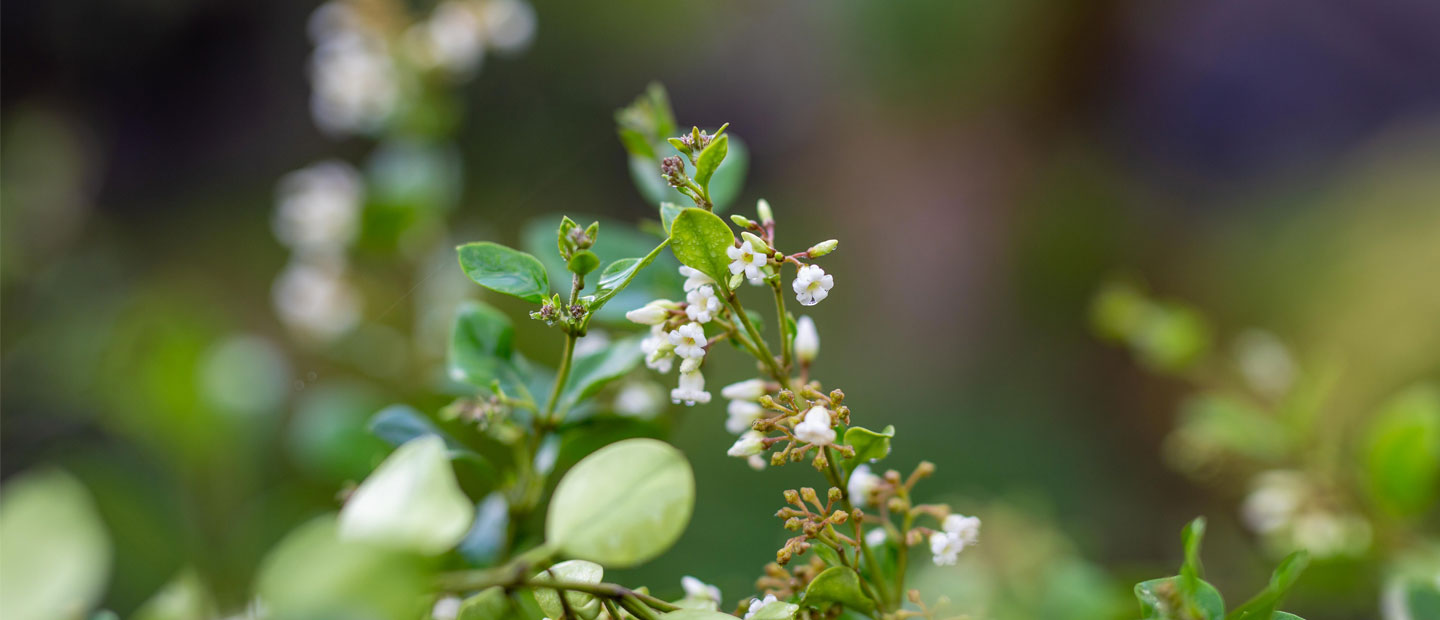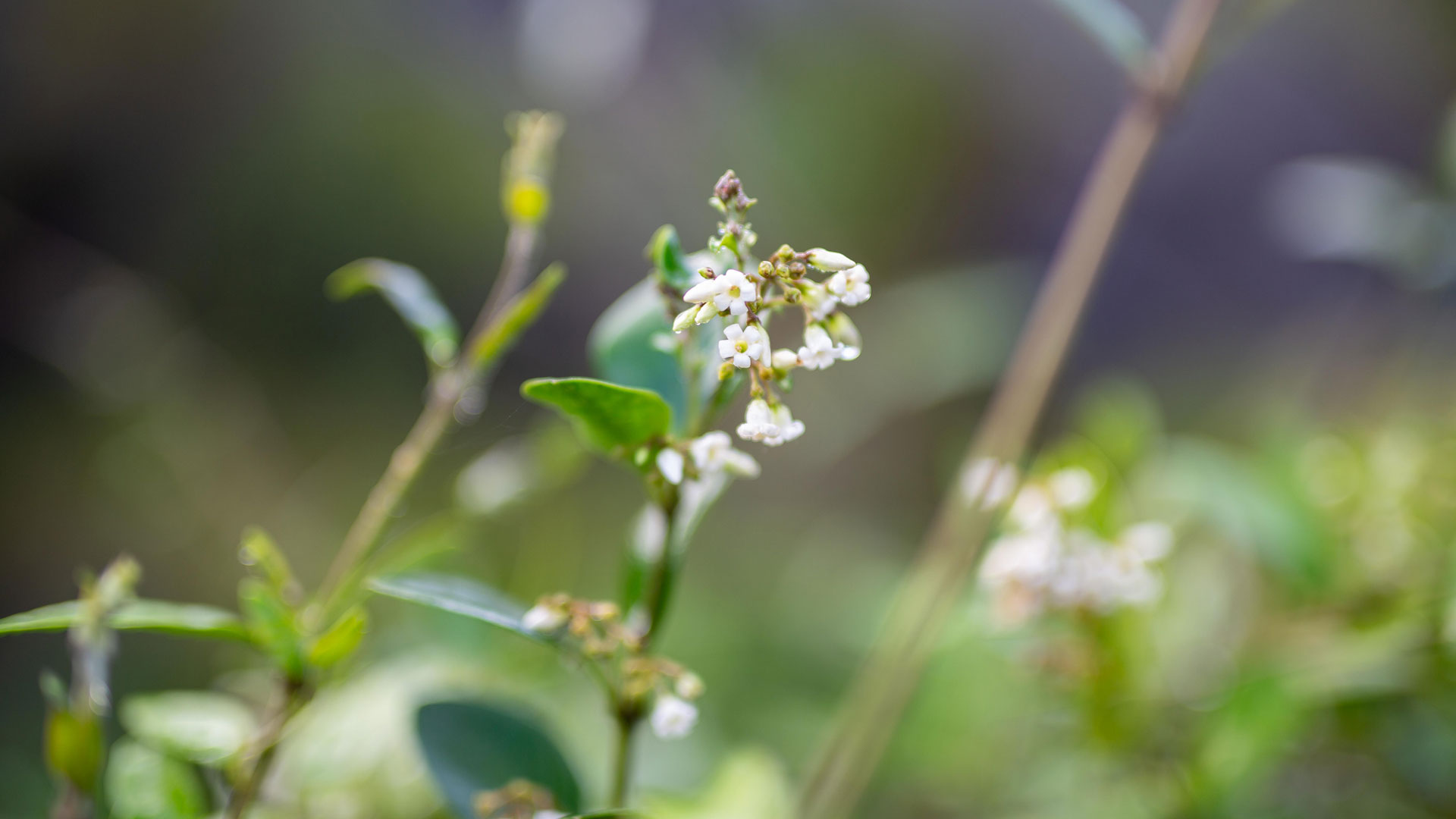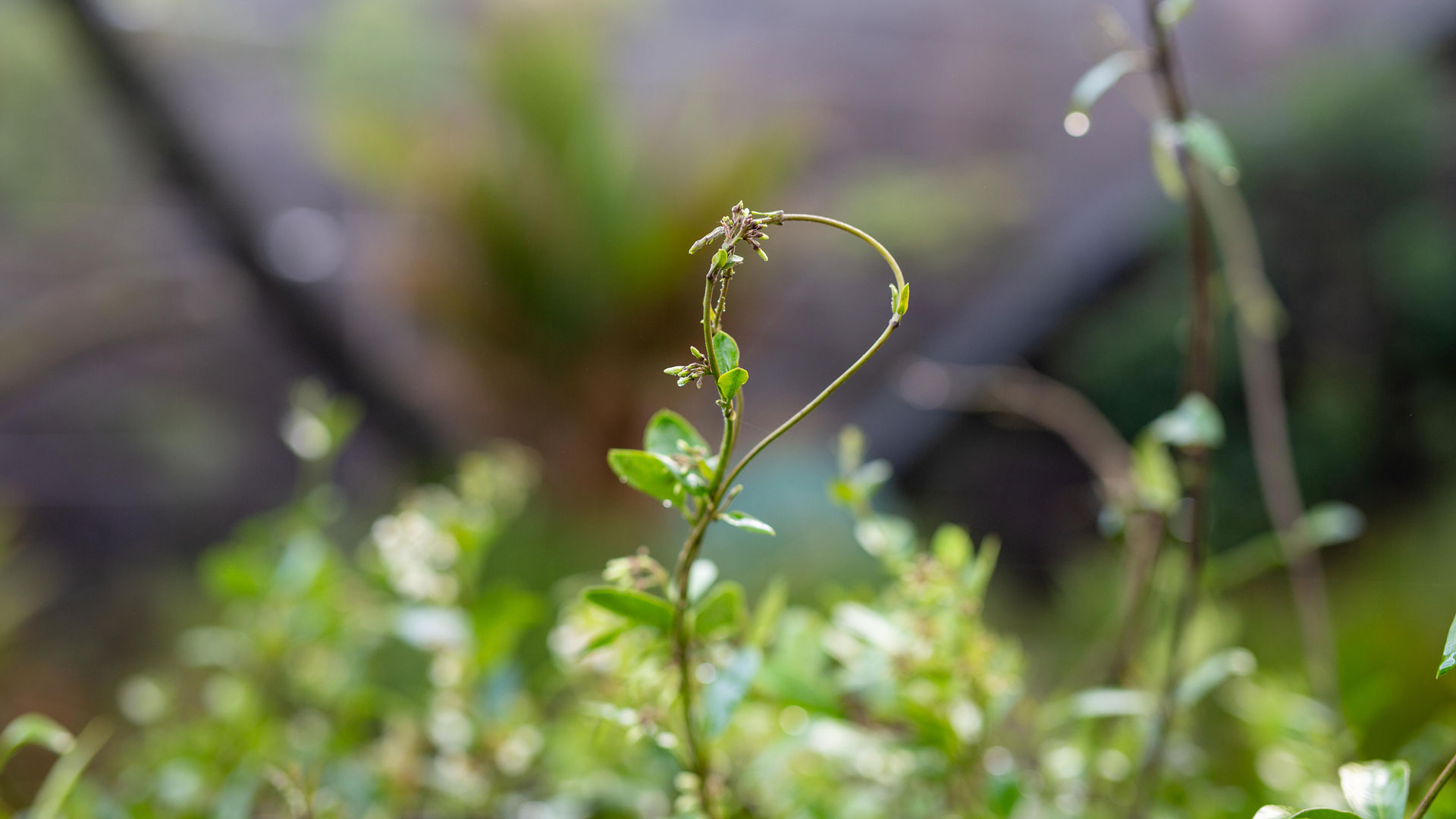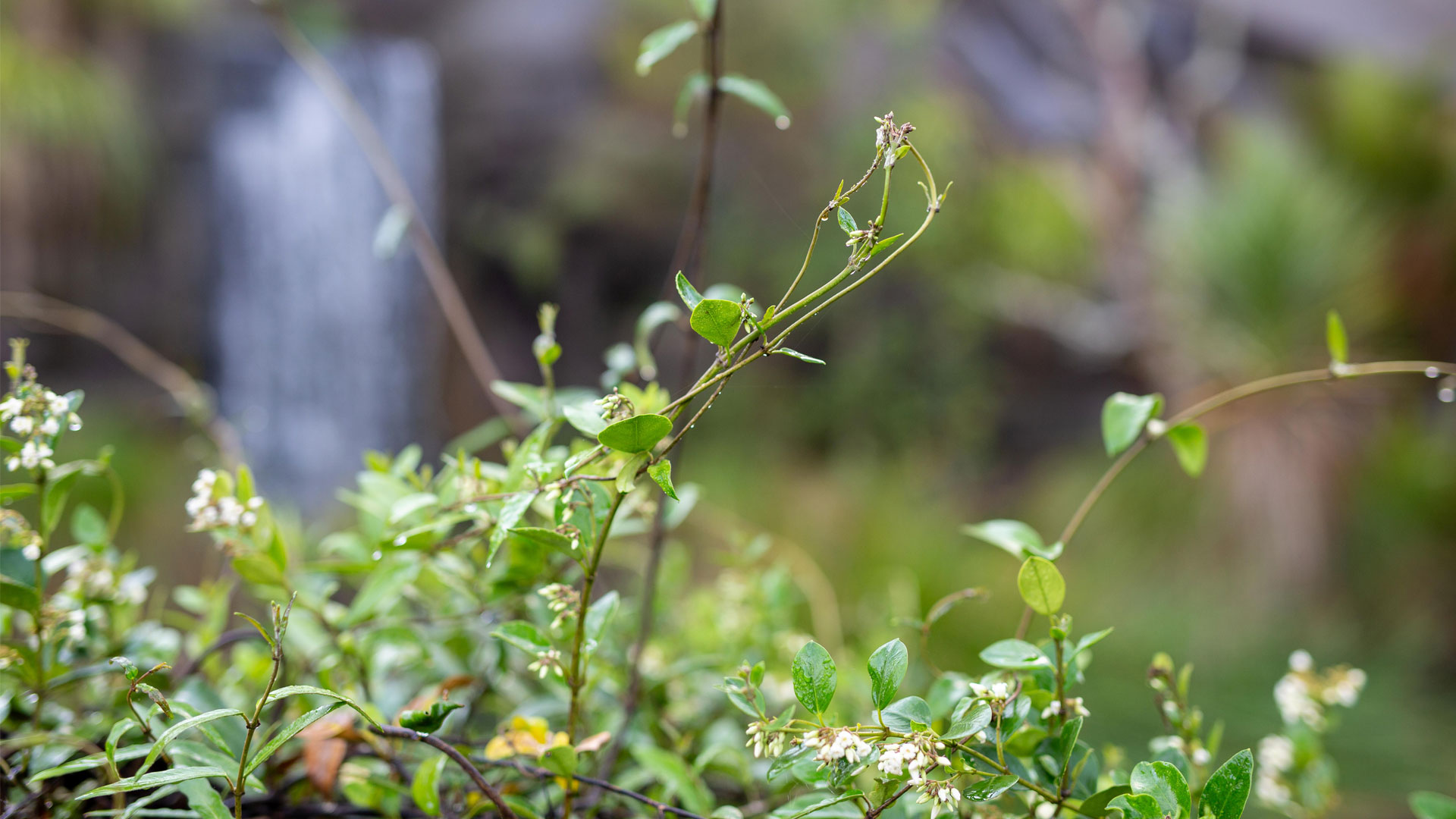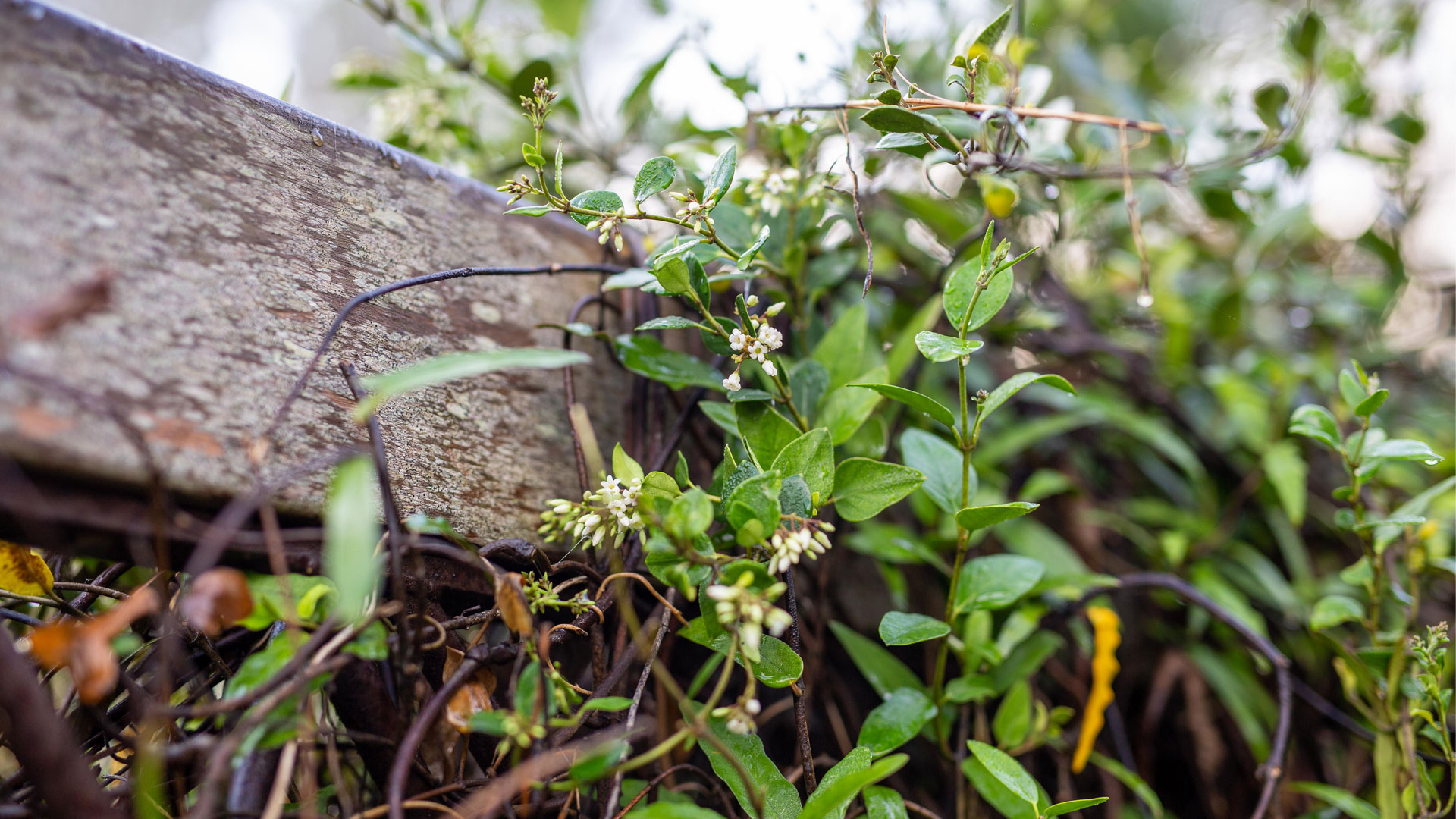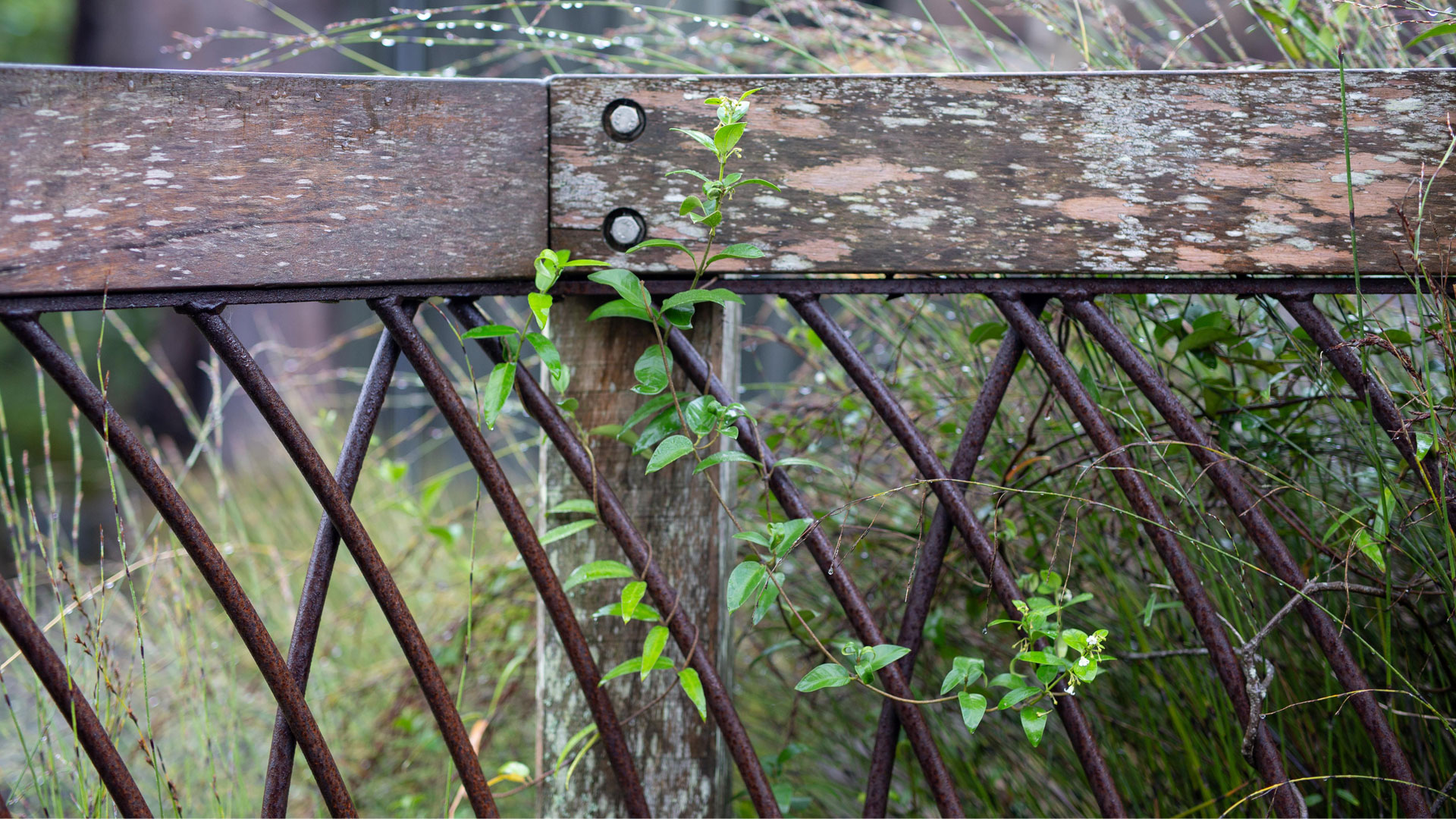Parsonsia heterophylla is the largest of all three species (with the largest leaves and flowers) that displays profuse clusters of small creamy-white flowers from spring until autumn each year, that will eventually form fruit. These fruit take the form of long thin pod-like capsules that release numerous tufted seeds with long silken hairs into the wild, to be blown about and dispersed.
This fast-growing evergreen can grow up to ten metres tall with reddish brown branches that twine around other trees, shrubs or other suitable supports such as trellis or railings.
Although not of great traditional use by Maori, Parsonsia flowers were occasionally used for hunting - fastened to the perches of bird-traps as a lure, with the vines used for tying up boundaries and fences.


